 Berbers or Amazighs are famous for their jewelry. The local blacksmiths and jewelry makers have always been skilled and respected. They knew and used many techniques, worked with different materials, and could produce a masterpiece from scraps. It’s a pity, so few original Berber jewels have survived to this day. Many of them were recast and altered by every new generation who got them. But still, a lot of vintage Berber adornments are kept in museums and can be seen by all interested people.
Berbers or Amazighs are famous for their jewelry. The local blacksmiths and jewelry makers have always been skilled and respected. They knew and used many techniques, worked with different materials, and could produce a masterpiece from scraps. It’s a pity, so few original Berber jewels have survived to this day. Many of them were recast and altered by every new generation who got them. But still, a lot of vintage Berber adornments are kept in museums and can be seen by all interested people.
Berbers or Amazighs (their self-name) is an ethnic group indigenous to the North African region. By the way, “Amazighs” means “the free people”. Today, the majority of Berbers live in Morocco, Tunisia, Algeria, Mauritania, Libya, northern Niger, northern Mali, and western Egypt. And the total population of Berbers in North Africa is about 100 million people.
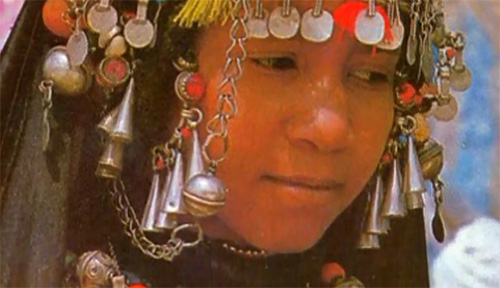
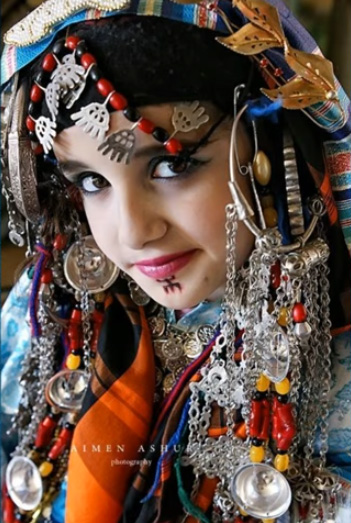
The culture of this ethnic group is very unique and pretty well-preserved, including the clothing traditions and folk clothing crafts.
Origin of Berbers
Also, we can say that Berbers are a really ancient nation. Their presence has been recorded as early as 3,000 B.C., as the Greeks, Romans, and even the ancient Egyptians have indicated the presence of Berbers in their records. But there is no complete certitude about the origin of the Berbers.

For example, the Greek historian Herodotus said in the 5th century B.C. that Berbers descend from the inhabitants of Troy who had sought refuge in North Africa after the city was conquered by the Greeks.
A few centuries later, the Roman historian Sallustius claimed they originated from Persia.
Later, the Byzantine historian Procopius saw the Berbers as being Cananeans who were expelled from Palestine by the tribes of Israel after the defeat of the Goliath by David.

However, according to the genetic studies, the genetically predominant ancestors of the Berbers appear to have come from East Africa, the Middle East, or even both, but the details of this remain unclear.
Berber jewelry
Berber jewelers have always been skilled and respected. They knew and used many techniques, worked with different materials, and could produce a masterpiece from scraps. Each region had its peculiarities and unique features in jewels, so you can determine where a certain jewelry item was made just by looking at it.
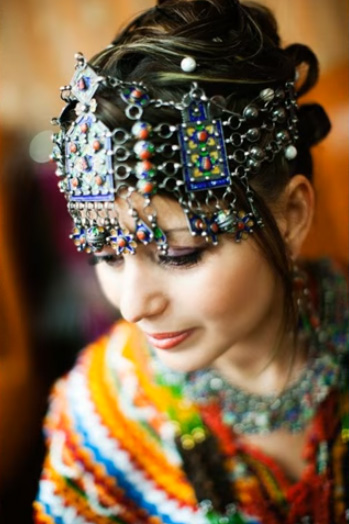
For a Berber woman, her jewelry collection equals her private bank account. These pieces belong to her and she can do anything she wants or needs with them. So local females start to collect valuable adornments from a young age. At first, a girl gets her jewels from parents or receives as presents from relatives. Later, her groom and then husband buys them for her. And when her own daughters get older, she passes some of her jewelry to them.
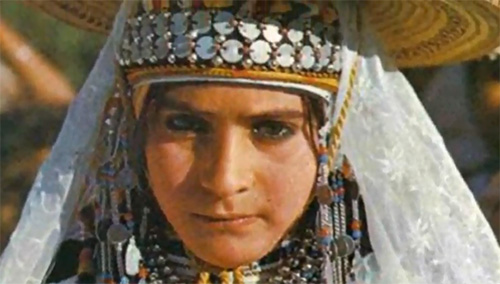
Unfortunately, almost every time the piece is passed from one generation to the next, it is being remade to suit the tastes of the new owner. That’s why today, there are too few original jewelry items older than from the 19th century.
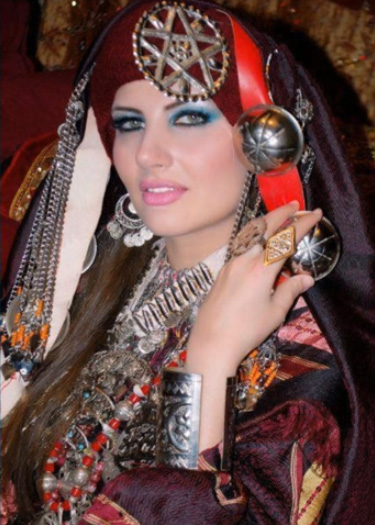
Among the most popular Berber jewels, there are necklaces, bracelets, brooches, temple pendants, earrings, and headdress adornments.

One of the most popular Berber jewelry pieces traditionally was a pair of brooches connected by a chain. These fibulae often had a triangular shape and were adorned with gems, filigree, enamel, etc. The material they were usually made from is silver (pure silver or silver alloy).
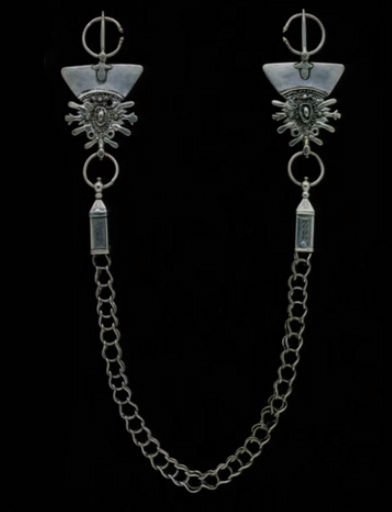
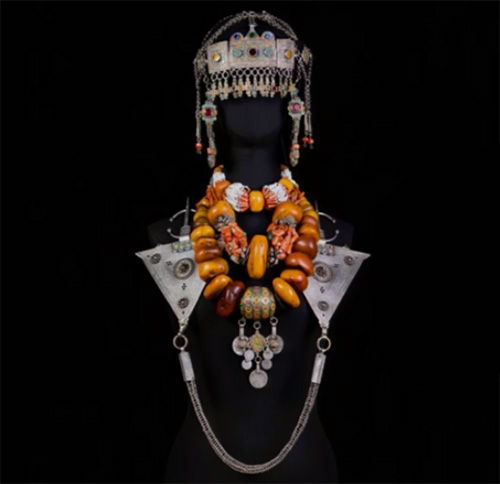
Jewelry set from Morocco, the late 19th – early 20th century. Musee Berbere, Morocco
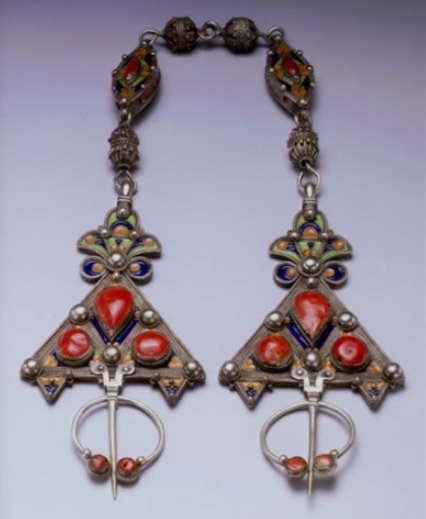
Brooches made from silver alloy with enamel and coral, Northern Algeria, late 19th – early 20th century. Newark Museum
Another material, highly estimated by Berbers is amber. Women wore necklaces made from amber beads – often rather large ones, like you see on the photos below.
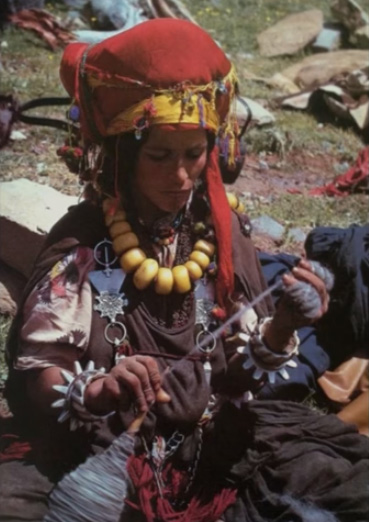

But amber was an expensive material, so only the wealthiest of Berber women could afford such necklaces. Women could mark their status with costly amber necklaces. That’s why husbands often presented their brides with such gifts. Poorer females sometimes used fake amber instead of the real one.
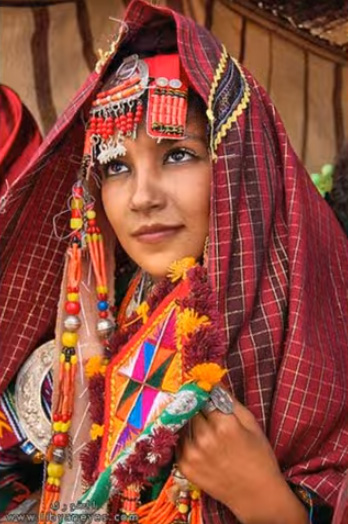

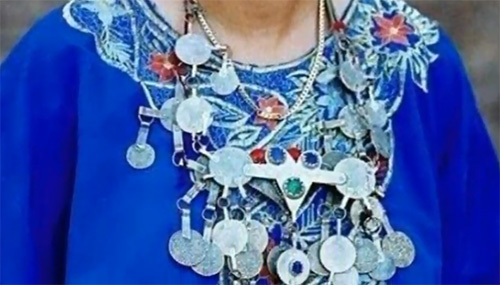
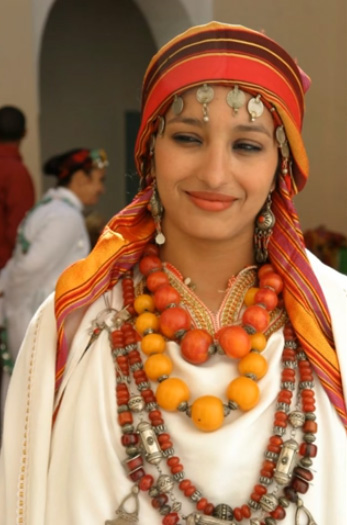

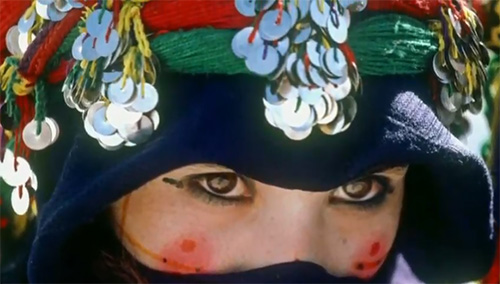
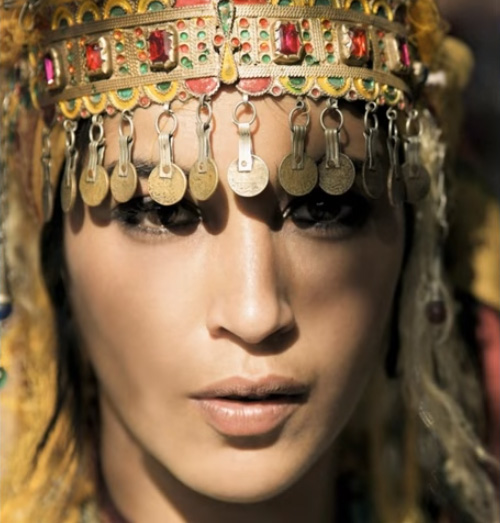
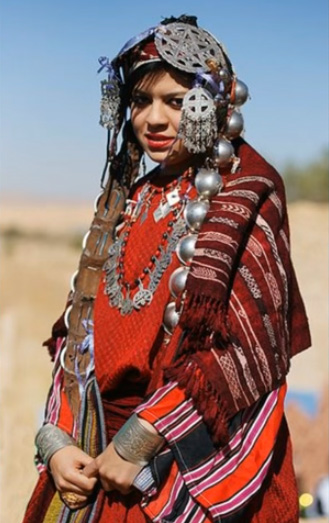
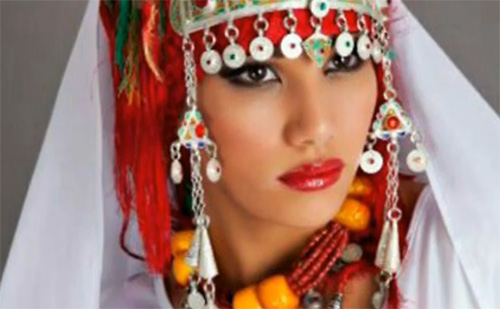
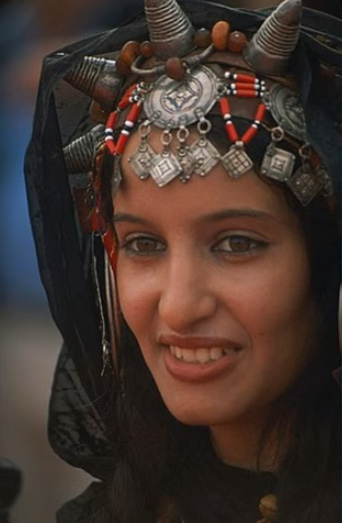
Photos from:


